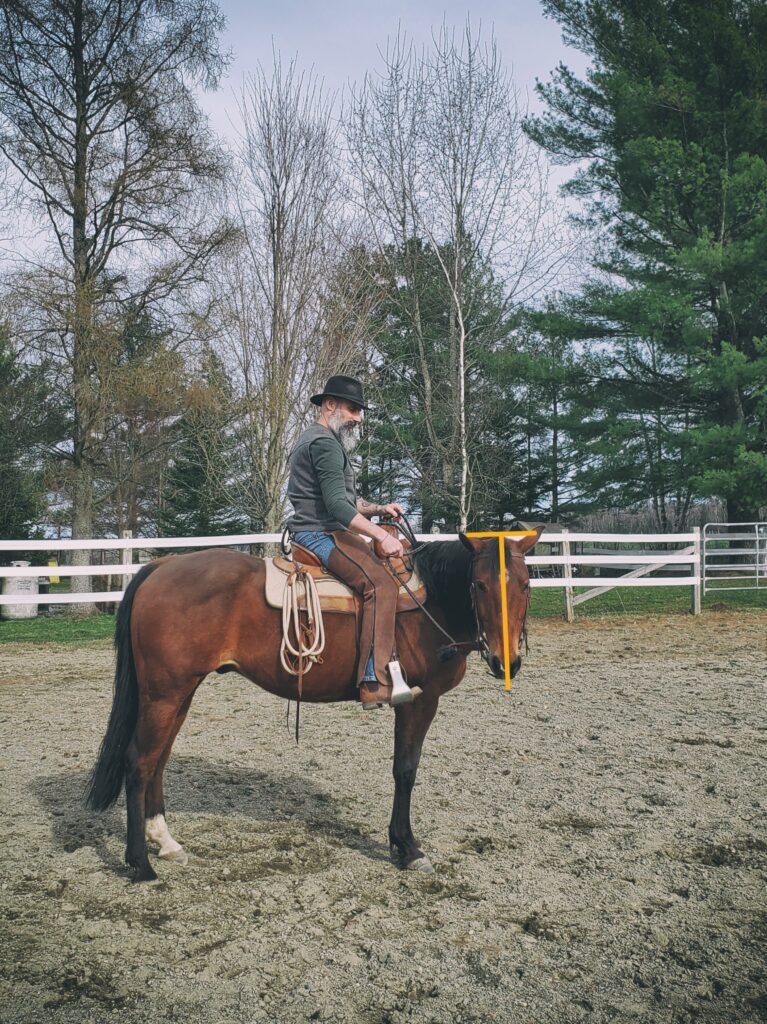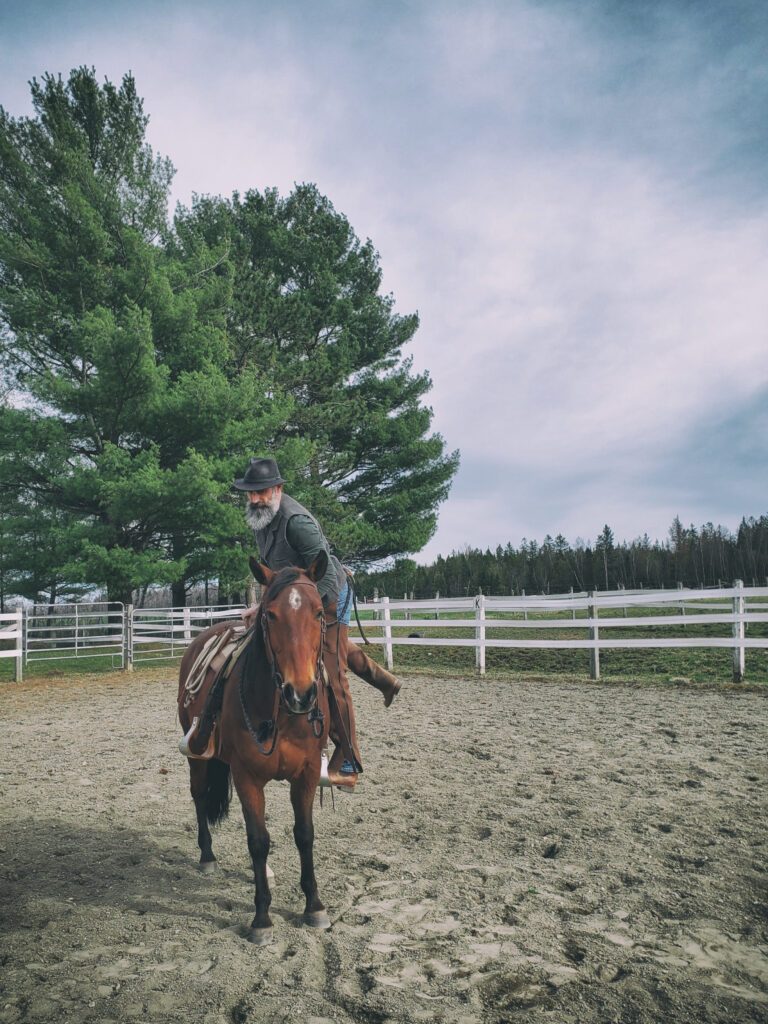Some ideas and tips to safely and gently mount a horse, taking its comfort into consideration.
Table of Contents
I might sound presumptuous to talk about how to mount a horse, yet I saw some so-called riders having quite disturbing habits: pulling hard on the mouth, or actually breaking their horse’s back to the point that it was about to fall down… Hopefully, most people are more careful, yet a few tips might be helpful.
Lateral flexion
In my opinion, your first preoccupation should be to make sure your horse stands still. Why would you like to mount a horse that starts to walk around as soon as you put your foot in the stirrup? It is not comfortable, and it can be dangerous. So, the first thing I teach a horse before I get on board is to stand still and wait for me.
In order to do so, I will start by flexing his neck and head. Pull gently the rein and wait until the horse yields under pressure, and flexes slightly his head. Then release and pet your horse. Repeat the operation and improve step by step until your horse bends softly and under very light pressure. The perfect lateral flexion puts the head at an horizontal angle of 90°C, ears line parallel to the ground.

At the beginning, your horse will start to turn on and on, so be ready to walk. Next, he will start to slow down, finally stop. As soon as your horse stops, the head in the good position, release the rein or the rope and pet him. Leave him a few minutes to soak up the exercise, and start again. Pretty soon, a light touch on the rein will be enough to flex the head softly, all feet on the ground. A horse having the head flexed can not buck, his hindquarters being pushed away. Once your horse is taught this lateral flexion, he will stand still everywhen you pull the rein.
Mount a horse
Prepare for success. If your horse walks one step forward when you get ready to mount, back him up ten steps. If he backs up one step without your asking, make him yield his hindquarters for a couple of circles. Basically, every move done by your horse without your consent should be followed by an uncomfortable second-deal: be firm and consistent, your horse will understand quickly that he should stand still unless you ask for anything else.
Quite soon, when you come to your horse’s flank to mount him, he will know better than moving around and will wait for you. Grab the mane and your reins in your left hand, the saddle in your right hand, and put your foot in the stirrup. From here, consider your horse when you will put your extra kilos on his back:
- Make sure your horse is standing firmly on his four legs.
- Push on your left leg to propel yourself instead of pulling on your arms.
- Raise your right leg above its hind, beware not to hit him or scratch him.
- Land gently on the saddle, you should seat down as light as a feather.
And don’t forget: if everything went well, pet your horse!
Flexion
Some horses are reputed to be problem horses because they start to walk as soon as the rider is on the saddle. Usually, riders have taught their horses to do so: they get on and BANG they hit the flanks to move forward. Pretty soon, if the horse does not want to be squeezed at once or to receive spurs in the flanks, he just starts to move as soon as possible.
So, take this good habit, once you mounted your horse, to flex his head. Same thing as from the ground: pull lightly the rein until your horse bends the head and neck, then release. Do this a few times on each side. After a couple of sessions, your horse will know that he has to wait on you before moving forward.

Q&A
What if my horse starts to walk around?
Walk with your horse, keep the pressure until he stops, and gets relaxed. That is when you should release the rein and pet your horse. So, be ready before you start: you may have to walk for a few minutes!
What if my horse does not stand still when I mount?
Process is the same as before, although you might hop on your right leg instead of walking. With colts or dominant horses, or if you do not think you have the good condition to follow up your horse, just do not try to mount on your horse until he is really relaxed with the lateral flexion. Then, if he moves when you prepare to mount, take your foot out of the stirrup, and back your horse up over ten metres. Do that every time he moves when you want to mount, and he will soon understand that it is less exhausting to wait for you than to avoid you.
What if my horse starts to move as soon as I sit?
One more time, the process is the same, just operate it from the saddle. You should have your reins ready in your hands when you mount, then you just have to pull lightly the rein so your horse will flex his head and stop. If you have correctly done your groundwork, he will yield his head lightly, and softly. After a few sessions of work, he will just stand still, and wait for your cues.
